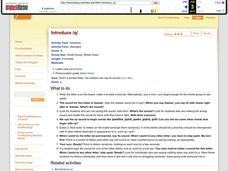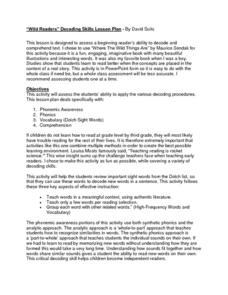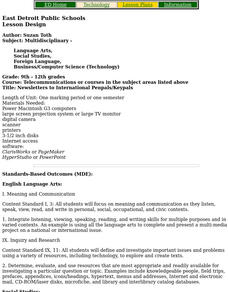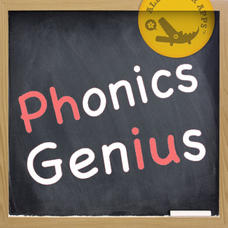Curated OER
Introduce /Q/
Everything your pre-readers need to know about the letter Q is right here; this strategy combines pronunciation, letter recognition, sound, and word examples. Scholars examine the letter shape and listen to you pronounce the /kwww/...
Achieve3000
Discriminating Phonemes
Develop the fluency of beginning readers one sound at a time with this phonemic awareness lesson. Through a series of whole-class instruction, independent practice, and collaborative learning activities, children practice...
David Suits
“Wild Readers” Decoding Skills Lesson Plan
Set young readers on the path toward fluency with this phonemic awareness resource. Based on the award-winning children's book, Where the Wild Things Are, this lesson allows beginning readers to practice isolating...
Curated OER
Match the Rhymes
Tree, bee, knee, three... what do these have in common? Focus on vowel sounds in this matching worksheet for beginning readers. Learners connect a picture of a tree to pictures that rhyme with it and then get some printing practice. All...
Curated OER
Swat The Spot
Students practice beginning letter/sound association. In this beginning letter/sound lesson, students listen to a reading of Potluck by Anne Shelby while identifying the sounds that are associated with the beginning letters of words in...
Curated OER
Newsletters to International Penpals/Keypals
Students participate in an intercultural E-mail exchange throughout a semester. They send newsletter to international penpals/keypals.
Curated OER
Classifying Angles
In this classifying angles worksheet, 10th graders solve and complete 35 various types of problems. First, they match each type of angle with its correct description. Then, students determine whether the given lines or planes are...
Curated OER
Recognizing Pictures that Correspond to Words in a Reading
In this picture/word association worksheet, 2nd graders circle pictures of words that are used in 4 short readings. They find the correct "th," "qu," and "wh" pictures in this digraph activity.
ReadWriteThink
Word Recognition Strategies Using Nursery Rhymes
As a class, scholars read the poems, Humpty Dumpty, Peter, Peter, Pumpkin Eater, and Jack and Jill, in order to identify words with the same ending sound. Using their rhyming skills, learners brainstorm additional words...
National Endowment for the Humanities
How to Win a World War
High schoolers are have begun to learn the art of diplomacy with each other, but do they understand how diplomacy works at a global level? The second in a series of four lessons, guides scholars in evaluating primary sources....
National Endowment for the Humanities
The New Order for "Greater East Asia"
Sometimes the New Order becomes synonymous with its implications for European countries, but what about its consequences for East Asia? The final instructional activity in a four-part series teaches scholars about World War II. High...
National Wildlife Federation
Life in the Cold: Climate Challenges
What does it take to make it in the Arctic? Learners examine the cold weather adaptations of a polar bear that help it survive. With everyday objects, they model these characteristics as they become make-shift polar bears. Modeling helps...
Worksheet Web
Using Pictographs
If one ice cream cone represents three ice cream scoops, and Bob has four ice cream cones, then how many scoops does Bob have? Learners solve these kind of questions with their new understanding of pictographs.
Starry Night Education
The Stars
Three astronomy activities in one resource! Here you will find one hands-on activity, one demonstration, both with discussion questions, and one activity worksheet. During these lessons young scientists discuss how stars are...
Innovative Mobile Apps
Phonics Genius
Readers at any level who are practicing phonics will benefit from a highly customizable set of features designed for instruction and practice. The extensive library of phonemes and exemplar words covers sounds from the a in cat...
Perkins School for the Blind
Packaging Snacks
Have your learners with special needs practice cooperative work skills, teamwork, and packaging. The kids will form an assembly line. Each pupil will add an item to a paper bag and then hand it off to the next person until the bag is...
Other popular searches
- Correspondence Schools
- One to One Correspondence
- One to One Correspondence
- Letter Sound Correspondence
- 1 1 Correspondence
- 1 1 Correspondence
- One on One Correspondence
- International Correspondence
- O=/o/ Correspondence
- Correspondence Letter
- Ai and Ay Correspondence
- A=/a/ Correspondence

















